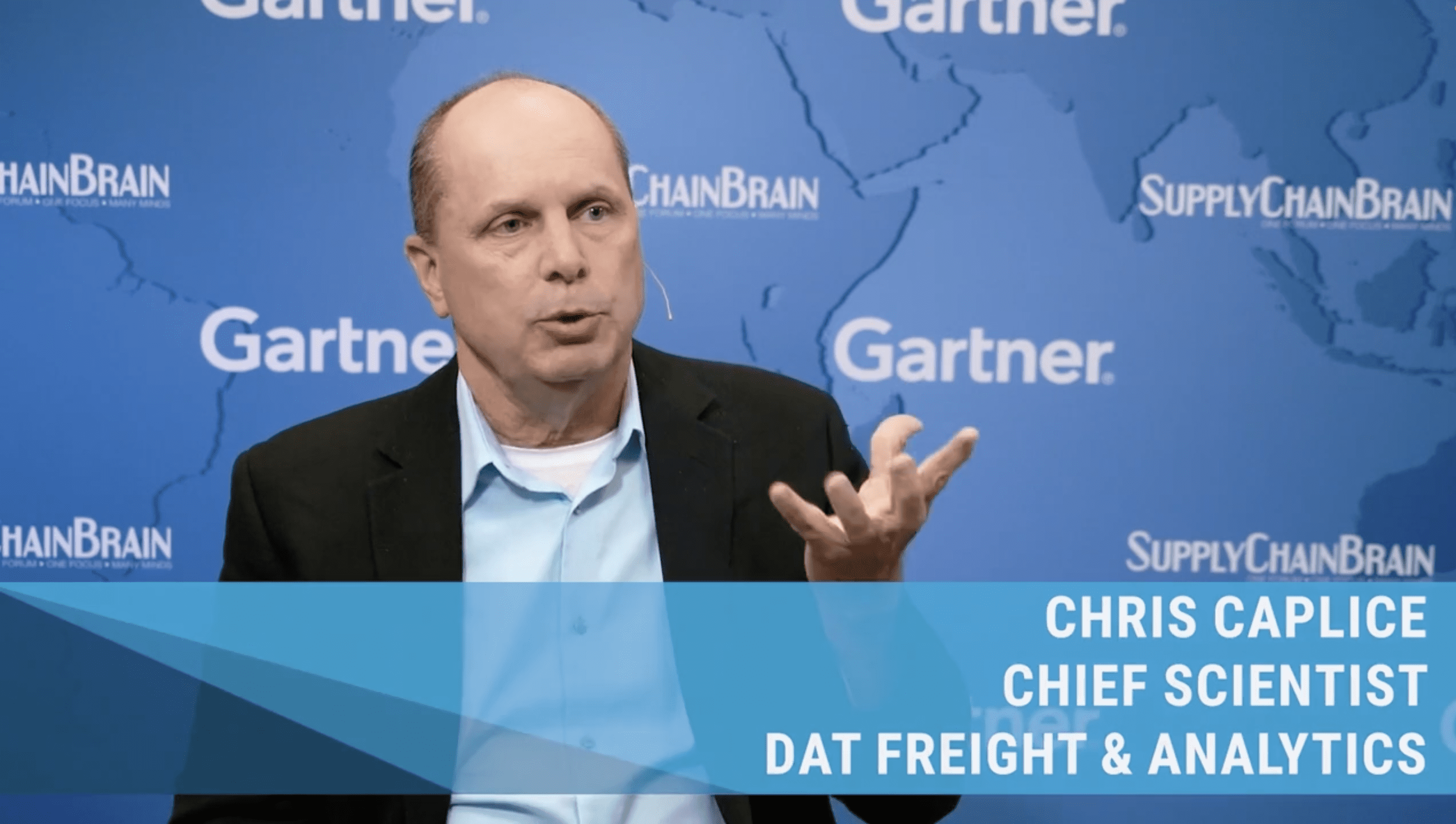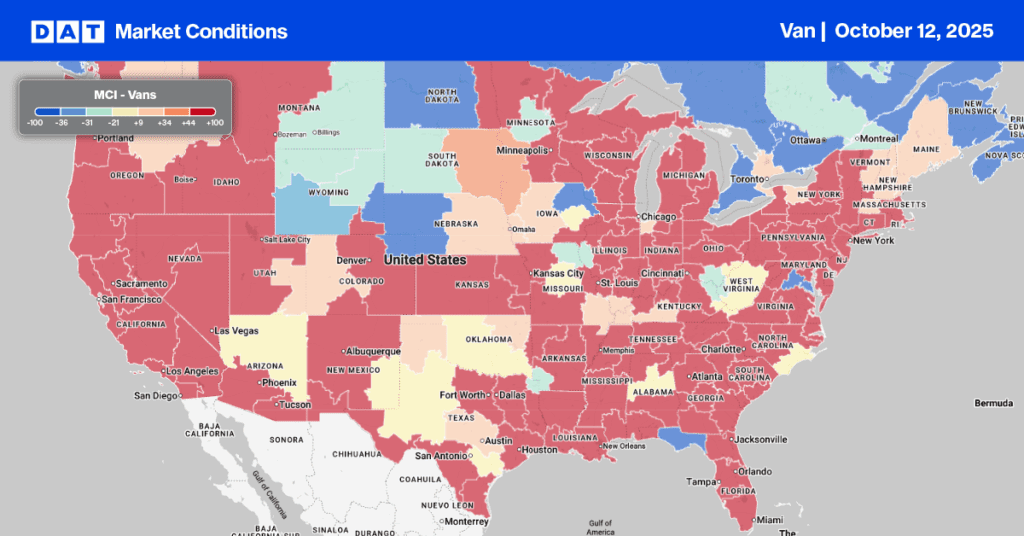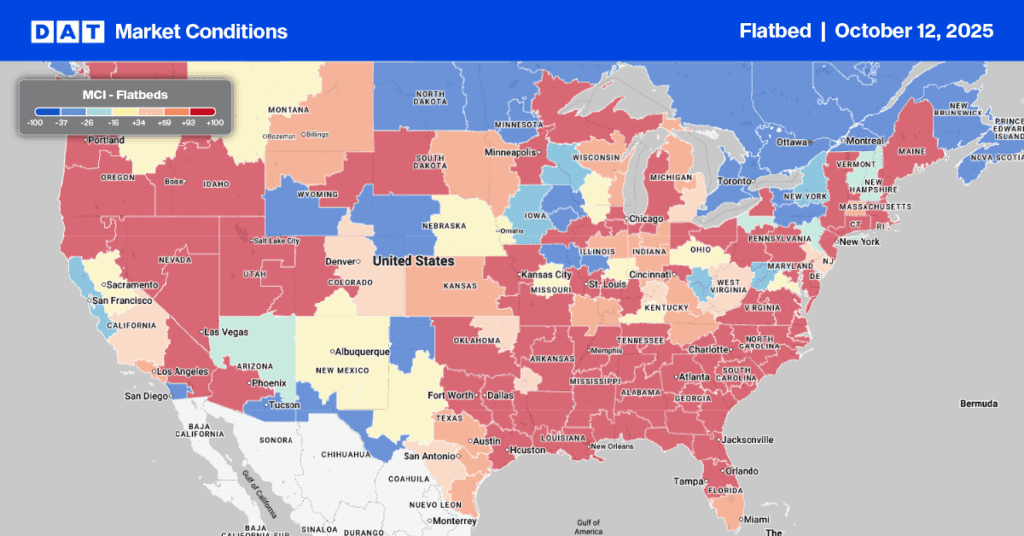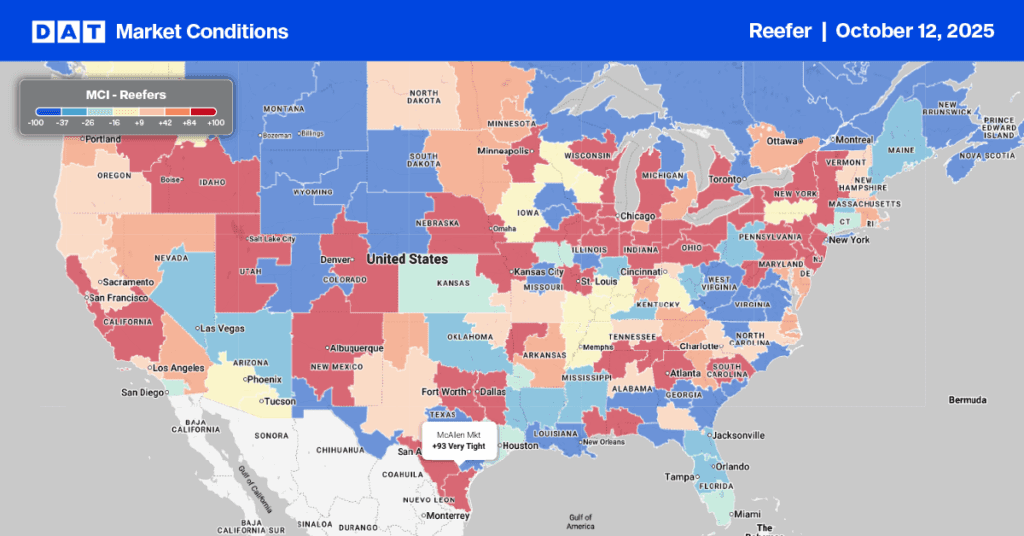
With aftershocks of COVID-19 still rippling across industries, it’s safe to say that “unprecedented” is the official buzzword of the decade. However, according to DAT Chief Scientist Dr. Chris Caplice in a recent conversation with Supply Chain Brain at the Gartner® Supply Chain Symposium/Xpo 2023, the reality of today’s transportation and logistics market isn’t unprecedented at all — especially for shippers and carriers willing to leverage freight market intelligence.
A familiar cycle
While other industries have spent the past few months considering the looming threat of overall recession, truckload transportation businesses were already deep into their own post-pandemic downswing.
When shipping demand surged in 2020, the number of owner-operator licenses among drivers spiked significantly. However, that spike didn’t necessarily translate into higher capacity. Rather, these new owner-operators were most often drivers with their own rigs deciding to set out on their own, leaving capacity essentially unchanged. As the market tightened, shippers looking to meet increased order demands turned to the spot market, driving utilization up to 25% — significantly higher than the average and 5% higher than usage during the 2017-2018 crisis.
Though spot market utilization has remained high (rarely dropping below 20%), shipment prices have dropped considerably since those early-pandemic highs. By March 2022, spot rates were consistently sitting below contract rates, heralding the arrival of the freight recession the industry is still weathering today. However, Caplice believes there is light at the end of the tunnel for those willing to wait it out and “ride the wave.”
Consistently inconsistent
The truckload market saw many significant changes during the pandemic years (like supply chain digitalization), but increased market volatility was not among them. Caplice shared that the freight and transportation market has always been unpredictable and highly sensitive due to a few unique features relative to other industries:
- Size: The U.S. freight trucking market is worth about $320 billion.
- Fragmentation: The market is highly fragmented, with 96% of 200,000 U.S. carriers having fewer than 20 trucks each.
- Competition: Regardless of whether the market is trending up or down, supply and demand in trucking rarely match one another, making competition for contracts, trucks, and lanes a constant in the business.
- Low barriers to entry: It’s relatively easy for smaller players in the freight market to get started — and to hit the breaks — meaning that supply and demand often change on a dime.
- Cost model: Trucking runs on scope, not scale. Cost savings in economies of scope come from variety rather than volume. In other words, buying more doesn’t mean paying less in trucking.
These factors come together to essentially ensure that no one company and no one choice makes the market. Instead, the market makes itself, with all the little decisions shippers, carriers, and brokers make every day coming together to turn the tides or maintain the status quo.
Riding the wave
Even with the challenges the industry’s players face and the “freight recession,” business is booming. Truck transport remains among the fastest and most cost-effective transportation modes available for domestic shipping, accounting for 70% of all freight transportation. In 2022 alone, the trucking industry moved more than 11.4 billion tons of freight and generated over $940 billion in revenue.
The market’s many competing variables make anticipating market trends incredibly complex, but leveraging historical and real-time data can provide the context decision-makers need to understand trends, identify ongoing patterns, and better plan for the future. Continued adoption of connected analytics suites is empowering shippers, carriers, and brokers with this information, allowing aggregated insights from previously disparate data sources to make the industry increasingly reliable.
Whether you’re new to the industry or part of a legacy firm, actionable insights can help you stay the course while the market works itself out, offering real-time and historical context about:
- Spot and contract market rates to help shippers and carriers confirm that their spending aligns with the market average.
- Partner performance to help logistics managers identify whether certain partners contribute to waste more than others.
- Weather and other environmental factors to help shippers and carriers anticipate disruptions and delays as well as adapt their plans to optimize routes.
- Available loads and lanes to help carriers minimize the impact of dead-hauling on their operations and shippers find the perfect carrier for the job.
Armed with comprehensive data suites, like those offered by DAT, shippers, brokers, and carriers can get access to all the information they need to figure out if they’re riding the wave — and adjust their approach if they’re falling short.
For more information on DAT iQ’s full range of freight analytics solutions, visit data.dat.com/Empower_iQ.


